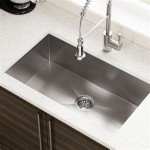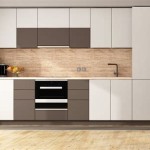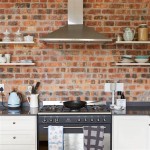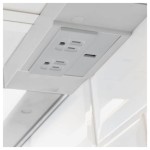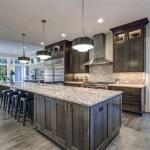Interior Kitchen Designers in New York City: A Guide to Finding the Right Professional
New York City, a global hub of design and innovation, presents a unique landscape for homeowners seeking to renovate or create their dream kitchens. The city's diverse architectural styles, from pre-war apartments to modern lofts, demand a specialized skill set from interior kitchen designers. Navigating the complexities of space constraints, building codes, and the sheer volume of design options requires a knowledgeable and experienced professional. This article provides a comprehensive overview of what to consider when seeking interior kitchen designers in New York City, offering guidance on finding the right expert to transform a kitchen into a functional and aesthetically pleasing space.
The role of an interior kitchen designer extends far beyond simply selecting cabinets and countertops. A skilled designer acts as a project manager, a creative visionary, and a technical expert, all rolled into one. They are responsible for understanding the client's needs and desires, translating those into a cohesive design plan, and overseeing the execution of that plan from start to finish. This includes everything from initial consultations and space planning to material selection, contractor coordination, and final installation. The unique challenges of working in New York City, such as limited space, strict building regulations, and the need to minimize disruption to neighbors, necessitate a designer who is intimately familiar with the local context.
Understanding Your Needs and Defining Your Style
Before embarking on the search for an interior kitchen designer, it is crucial to have a clear understanding of personal needs and desired style. This involves considering factors such as cooking habits, entertaining preferences, storage requirements, and overall aesthetic vision. A detailed assessment of current kitchen functionality – or lack thereof – can provide valuable insights for the designer. Consider: What works well in the existing kitchen? What needs improvement? What are the must-have features for the new space?
Defining a personal style is equally important. Browse magazines, online platforms like Pinterest and Houzz, and even visit showrooms to gather inspiration and identify preferred design elements. Are personal preferences aligned with a modern, minimalist approach, a traditional, farmhouse style, or something in between? Having a visual reference point will help communicate design preferences to potential designers and ensure alignment on the overall vision. It is also beneficial to establish a preliminary budget, as this will influence the scope of the project and the materials selected.
Furthermore, it is helpful to create a list of specific requirements, such as the need for a larger island, a dedicated coffee station, or specialized storage solutions for specific kitchen items. The more detailed the information provided to the designer, the more effectively they can tailor the design to meet personal needs and expectations. This initial preparation will save time and effort in the long run, ensuring a smoother and more successful design process.
Consider also the longevity of the design. While trendy features might be appealing in the short term, timeless design elements often provide a more sustainable and satisfying outcome over the long term. Discussing these long-term considerations with potential designers can help assess their ability to create a kitchen that remains stylish and functional for years to come.
Finding Qualified Interior Kitchen Designers in NYC
New York City boasts a vast array of interior design firms and individual designers, making the selection process potentially overwhelming. However, with a strategic approach, it is possible to identify qualified professionals who possess the necessary skills and experience to deliver exceptional results. Start by leveraging online resources, such as design directories and review platforms, to compile a list of potential candidates.
Check professional organizations like the American Society of Interior Designers (ASID) and the National Kitchen and Bath Association (NKBA). Membership in these organizations often signifies a commitment to professional standards and ongoing education. Carefully review the portfolios of potential designers, paying attention to the style and scope of their previous projects. Look for projects that are similar in size, style, and budget to the intended kitchen renovation. Assessing the quality of workmanship and the level of detail in previous projects is crucial.
Schedule initial consultations with several designers to discuss the project in detail and assess their communication skills, design approach, and personality. During these consultations, be prepared to clearly articulate your needs, style preferences, and budget constraints. Ask detailed questions about their design process, their experience working in New York City, and their approach to problem-solving. Inquire about their network of contractors and suppliers, as this can significantly impact the efficiency and cost-effectiveness of the project. Request references from previous clients and take the time to contact them to gather firsthand feedback on the designer's performance.
It is also important to verify that the designer is properly licensed and insured. Licensing requirements for interior designers vary by state and municipality, so it is essential to ensure that the designer meets the legal requirements for practicing in New York City. Insurance coverage, including liability and workers' compensation, is crucial to protect against potential risks during the renovation process. A reputable designer should be able to provide proof of licensure and insurance upon request.
Evaluating Proposals and Contracts
After conducting initial consultations, request detailed proposals from the shortlisted designers. A comprehensive proposal should outline the scope of work, the design fees, the estimated project timeline, and the payment schedule. Carefully review each proposal to ensure that it aligns with your needs and expectations. Pay close attention to the breakdown of costs, including design fees, material costs, labor costs, and any potential contingency funds.
Compare the proposals from different designers to identify any discrepancies or areas of concern. Ask for clarification on any ambiguous terms or conditions. It is also important to understand the designer's change order policy, as unexpected issues may arise during the renovation process. A clear and transparent change order process will help avoid misunderstandings and cost overruns.
Once a designer has been selected, a formal contract should be drafted and reviewed by both parties. The contract should clearly define the scope of work, the design fees, the payment schedule, the project timeline, the change order policy, and the dispute resolution process. It is advisable to have the contract reviewed by an attorney before signing to ensure that personal interests are protected.
The contract should also specify the responsibilities of each party, including the designer's responsibility to provide detailed design plans, oversee the project execution, and address any issues that may arise. The homeowner's responsibility is to provide timely feedback, make timely payments, and ensure access to the property for the designer and contractors. A well-drafted contract serves as a roadmap for the project, helping to minimize misunderstandings and ensure a successful outcome.
Payment schedules can vary. Some designers require an upfront retainer, followed by progress payments as certain milestones are completed. Others may structure payments based on the percentage of the project completed. Ensure the payment schedule is clearly outlined in the contract and aligns with personal financial capabilities. Avoid designers who demand excessively large upfront payments, as this may indicate a potential risk.

Elegant Dressing Stylish Dining Living With Art Interior Design What I M Reading Right Now For Plain English Kitchens Come To New York Doreen Chambers Interiors

Luxury New York Kitchen Design Designer Cabinets

Luxury Kitchen Renovations Meldnyc

Custom Cabinets And Showroom In New York Plain English Design

New York Style Kitchen In Love With The Look Hth

Manhattan Condo Renovation 241 5th Ave Gallery Kbny

Bilotta Kitchen Home Featured In Interior Design Magazine

European Kitchens In Nyc Pedini New York

Drew Mcgin Interior Design New York City

New York Manhattan Kitchen With Island By Martini Interiors




